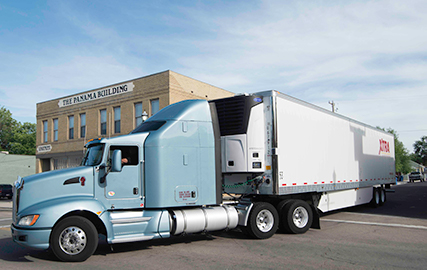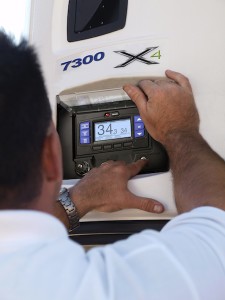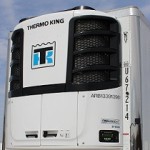
4 Hot Tips to Manage Cool Loads
Maintaining the integrity of refrigerated cargo is critical, for both safety and cost-efficiency reasons. Thanks to microprocessor controllers, modern trailer refrigeration systems are designed to be intuitive and easy to operate. Still, it’s possible to make a careless and costly mistake, regardless of your level of expertise with the equipment.
1. Read the directions.
The saying, “When all else fails, read the directions,” is old, but, with so much at stake, it bears repeating. Being familiar with how the equipment operates comes first when you’re hauling refrigerated goods. You can get manufacturer-specific operating guides and microprocessor alarm codes online and at XTRA Lease locations.
2. Check the operating mode.
Choose the correct operating mode for the load—either continuous or automatic*.

In continuous mode, the engine and refrigeration system are always running. Choose this mode when your load requires absolute temperature control. Continuous mode typically uses more fuel than “auto start/stop” because the engine runs constantly.
For goods that can tolerate a little temperature variability, choose automatic mode. This mode reduces fuel consumption and engine run time. It works in a way similar to a household refrigerator. When the temperature inside the trailer reaches setpoint, the system shuts off until the temperature rises to a predetermined level. Then the system automatically restarts and repeats the process until the load is delivered and the unit is turned off.
3. Be sure to press enter.
To change a temperature setpoint, you have to press “enter”. This is an assurance step that confirms the setpoint change is intentional. On most controllers, up/down arrows raise and lower setpoints much the same as a household thermostat does. But, on a reefer unit controller, you have to press enter to confirm the setpoint change or the setpoint will revert to its most-recent level. If you use the up/down arrows, but don’t press enter, the unit’s controller lights will flash to get your attention.
4. Fill ‘er up!
Running out of fuel results in lost time and money. And the reefer unit engine could lose its prime if air is drawn into the system–which means a service call to a technician who can purge the system and restart the engine.

Before hitting the road, check the level of the refrigeration unit’s fuel tank.
Modern reefer units use between 0.4 and 1.1 gallons of diesel per hour of engine run time. In automatic mode, the engine runs a fraction of the time that the unit is switched on and protecting cargo, so fuel consumption per hour most likely will be at the low end of the estimate.
Many refrigerated trailers, like those in the XTRA Lease fleet, are equipped with 50-gallon tanks, so units may run for several days before they need a refill. Most units also have fuel-level monitoring, using ultrasonic fuel sensors, to make it easier to see when it’s time for a refill.
*”Automatic start/stop” mode for Carrier. ”Cycle Sentry” mode for Thermo King.
- Your specific operation could require special loading procedures. Get more information at the Thermo King and Carrier Transicold websites.